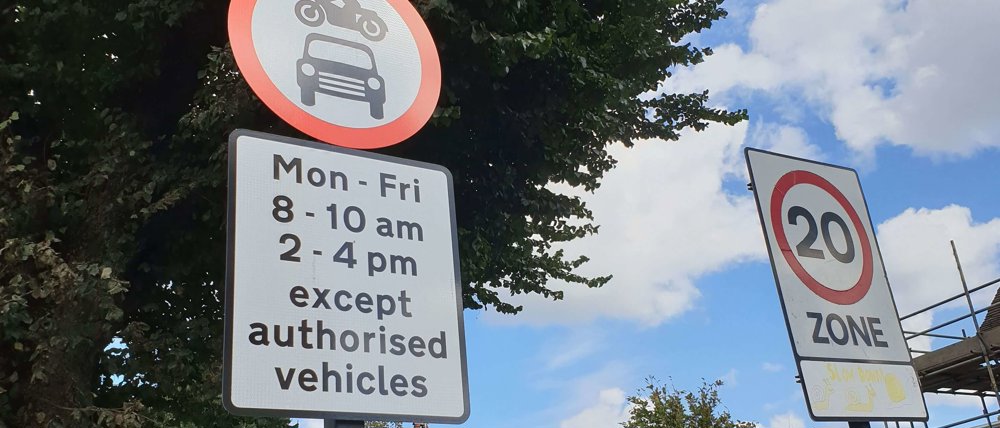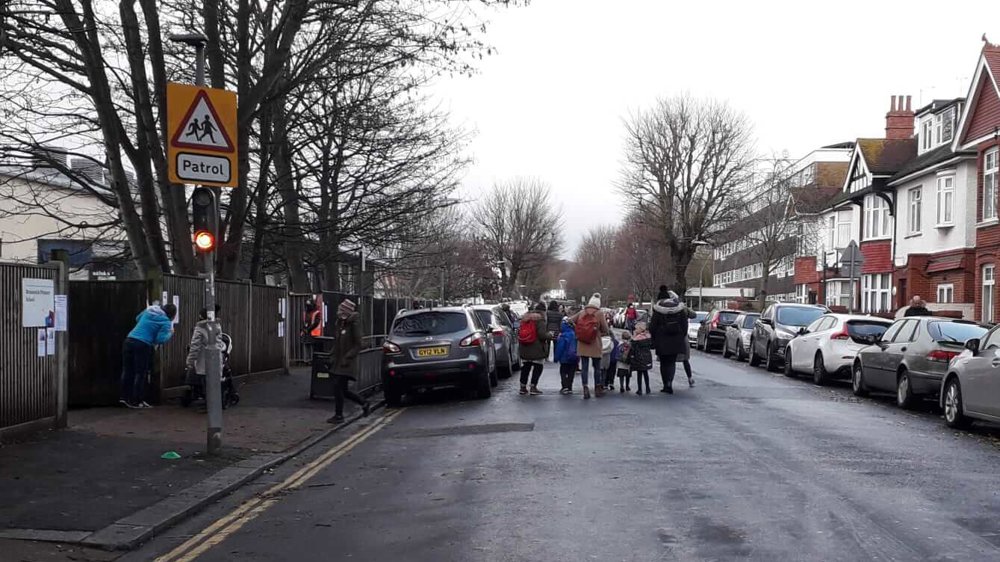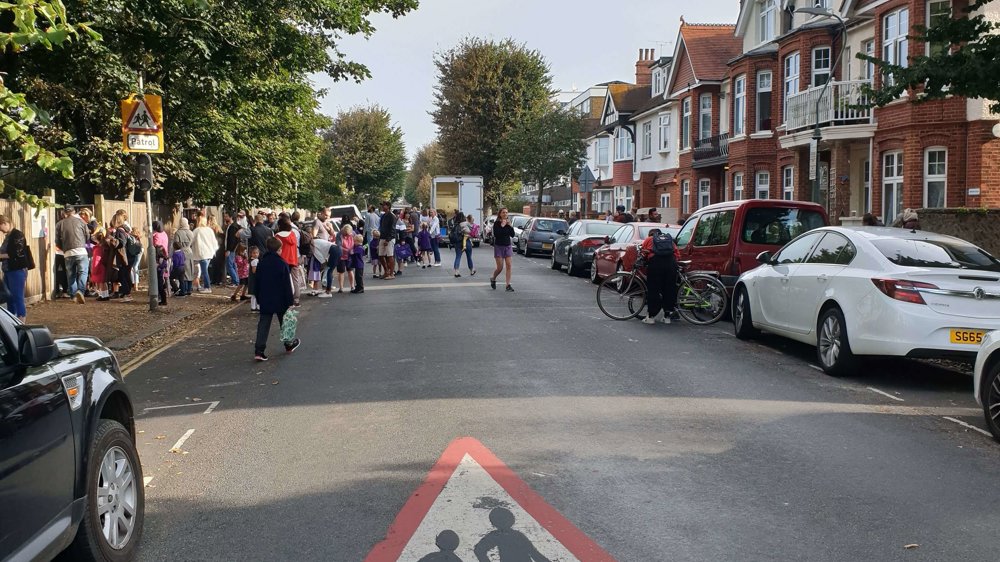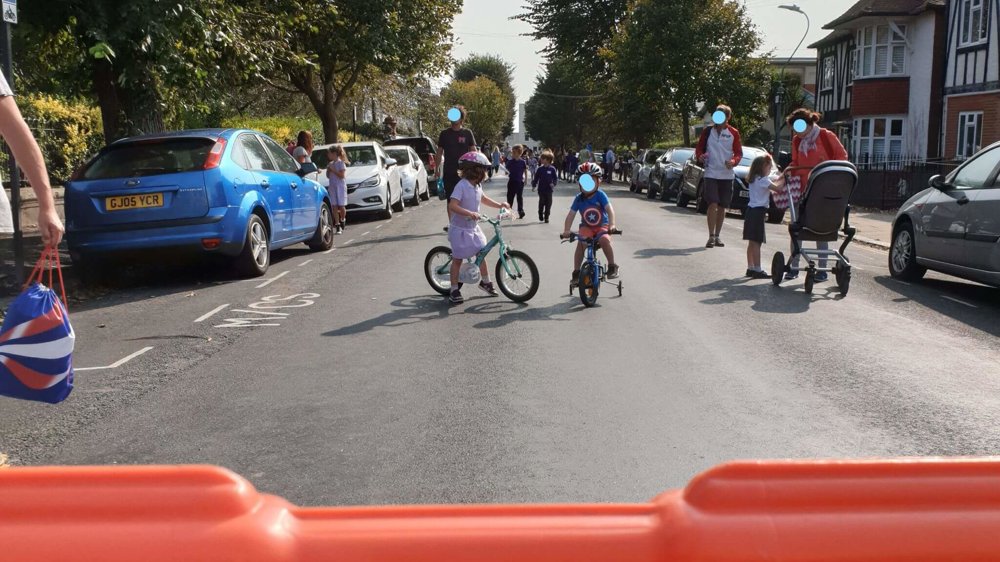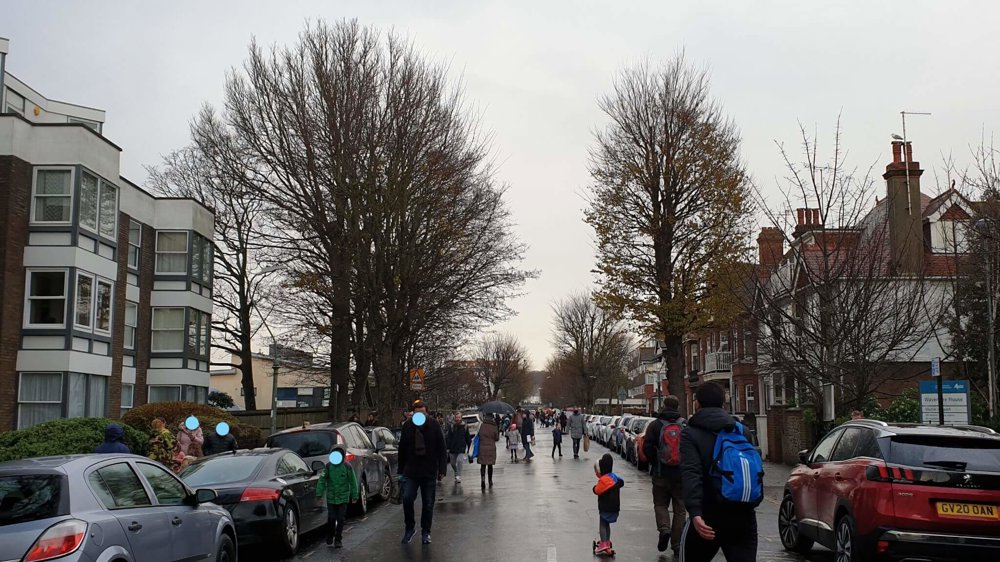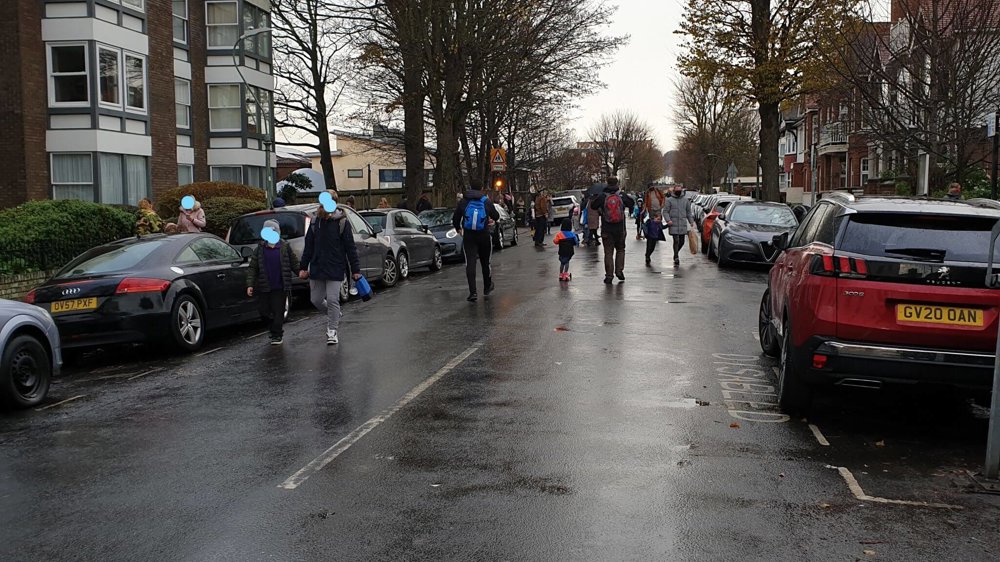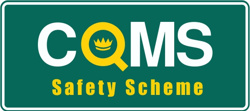Early in November 2020, one of our Senior Transport Planners, George Stow, began volunteering at a School Streets scheme near his home in Hove. School Streets schemes close the road outside a school at the beginning and end of the school day, lowering air pollution, reducing the risk of traffic incidents, promoting social distancing during the COVID pandemic, and contributing to a positive community setting. George provides an article on his hands-on experience of the scheme below, detailing the positive impact he has seen it make, and the challenges involved with setting up these schemes.
How I got involved with School Streets
Having become familiar with School Streets through our transport planning work, our blog post on the scheme last year Banning Traffic Outside Schools and the proposed rollout of the scheme to the school next to my pre-COVID home in Lambeth, when I found out that there were opportunities to volunteer at the scheme next to my new home in Hove, I was only too happy to put my name forward. As well as the benefits I know the schemes have for communities and pupils, I was looking forward to having a motivation to get outside of the house before work and to join in with my local community - both things that have been lacking in my life during the COVID-19 pandemic.
Brighton & Hove Council (B&H) began to trial School Street schemes in September this year, using temporary Traffic Management Orders (TMO) that last 6-18 months. If the schemes are successful, it is envisioned that permanent TMOs would be put in place, potentially alongside more, new infrastructure to support the scheme. With many schools now operating staggered starts and ends of the day in order to ensure ‘bubbles’ are maintained, B&H were encouraged to roll out the scheme to accommodate the required social distancing required at the start and end of the school day.
A group of us volunteers were given training by B&H, showing us where to collect and store the equipment, how to communicate with other volunteers at the other end of the street, how to deal with difficult drivers, and the relevant health and safety issues (masks on at all times!). Volunteers include parents from the school, as well as local residents such as myself, and even people from further afield who had been involved in different School Streets schemes that had since ended. B&H provided some staff initially, but funding was not in place to continue this for the long-term and these schemes are now entirely dependent on volunteers.
At the Brunswick Primary School where I volunteer, Alberto Zanni, a parent volunteer and transport/environmental economist, has taken on the crucial role of administrating the scheme. Alberto was fortunately already familiar with the schemes, which originated in Italy before being picked up by Hackney, then London and the rest of the UK. With two sessions a day requiring four people each, there are 40 spots to fill weekly - it is therefore evident how crucial this administrative role is in the successful operation of the scheme, especially considering that parent volunteers cannot staff the scheme whilst picking up their child from the school, and often can only manage half-shifts. Alberto operates the Google Documents sheet where we sign up for sessions, prompts volunteers to take on vacant slots, liaises with the school to promote the scheme and find more volunteers, and provides regular updates to volunteers. Living just a couple of minutes from the school, I volunteered myself to be available as a back-up in case of last-minute dropouts, but thanks to successful organisation this has only been required once so far.
Typical Operation of the School Streets scheme
The south end of the School Streets closure area is the minor arm of a T-junction to a relatively busy road, whereas the north end of the scheme is adjacent to the entrance to the local park, in a low-speed residential location.
Before each closure, the volunteers - in high-vis B&H jackets and face coverings - collect the equipment from the school site. The busier south end of the scheme requires two barriers to block the road, two signs indicating ‘road closed ahead’ to place on the main road, sandbags and traffic cones to support these signs, and four A-frame signs to prevent parking on the double yellow lines adjacent to the closure. This equipment is loaded onto a trolley and transported to the end of the street, and the team go about setting it up in advance of the closure. Spray paint markings on the road have been made by B&H to indicate where the barriers and signs are placed.
The north end is notably quieter and does not require so much equipment - just two barriers to block the road. Once all four volunteers are in place and 8:30/14:45 has arrived, we wave to each other from the opposite ends of the street and the barriers are placed across the carriageway. During the closure, volunteers stand on the School Streets-side of the barriers. Anytime a vehicle wants to leave the area, we move the barriers out of the way to let them out.
A number of vehicles are permitted to enter the street during the closure, such as teachers, blue badge holders, residents of the School Streets area, and deliveries or services to residences on the street. Formally, these vehicles should be stopped and a School Streets volunteer would ask the driver their reason for access - however given that the scheme has now been running for months, many of the volunteers have become familiar with the vehicles of teachers, residents and blue badge holders, helping speed up the process. Vehicles inside the closed area must travel at a walking pace - however in reality it is often difficult to go any faster as the road is typically filled with parents and children.
While the B&H instructor had prepared us for hostile drivers, fortunately these are few and far between - most drivers accept that the street is closed to help social distancing without any issue. Occasionally someone tries their luck and claims to be a resident or making a delivery, and then drives right through - however they soon find that the slow speed they have to travel at doesn’t make this much of a shortcut at all and discourages this as a repeat tactic!
The scheme is now well established and drivers in the area are typically aware of the restrictions. This means that there are not many queries from drivers to answer, and vehicles are not constantly accessing and egressing the road. For the most part, volunteers find themselves outside, able to chat to each other and parents, and enjoying the positive community atmosphere that giving the road space to pedestrians brings.
At the end of the closure period, the barriers are removed from the road, the trolley is re-loaded, and the equipment is returned to its storage place.
Positive Outcomes
As well as the air pollution and road safety benefits, the road closure has given additional space for children to play after school, with scooter races frequently seen in good weather. It also encourages walking and cycling to school, as parents can no longer park directly outside the school. There is a quieter area to chat right after school, and the route to the school is now less dangerous. Many parents speak highly of the scheme and see the benefits for their own family’s safety, and for the community.
Alongside these altruistic motivations, us volunteers enjoy the chance to get outside, especially when so many of us are working from home full-time during the pandemic. It also provides ways to become involved in our communities and meet new people (and a surprisingly high number of volunteers are transport professionals - if you can believe that’s a coincidence!).
Challenges faced by School Streets schemes
It has become clear from my short time volunteering on this programme that the scheme would fall apart without the dedicated volunteers, support from the school and local authority, and most importantly, successful administration. While B&H initially set up 12 School Streets schemes in September, only 4 remain currently operational. This is largely due to a lack of volunteers, and in some cases a lack of willpower from the school administration, however it is hoped that the success of the remaining schemes will encourage these schools to reconsider.
Some parents will always drop children off by private vehicle, and that a School Streets scheme will by virtue displace this to the fringes of the School Streets area. While this can cause issues on these adjacent roads, it is important to remember that this is an overall net benefit, as it is further from the school gates, reducing stalling, u-turning and traffic next to the children. Furthermore, it disperses the drop-off/pick-up operation to a wider area, reducing the impact in any one location.
The future of School Streets
At the end of the temporary TMO period, the Schools Streets will face another challenge - becoming permanent. At present, the costs of running the scheme are low, however converting the scheme to a permanent arrangement would likely require new infrastructure such as permanent swing gates or rising bollards. Volunteers would still be required to staff and operate these features, however it is expected that the number of volunteers needed would reduce.
Under current TMO legislation, cameras cannot be used to enforce School Streets programmes anywhere except London. This would reduce the staffing required for the operation of the scheme significantly, but it remains to be seen if this change in legislation will come forward for the rest of the country.
I am glad to have become involved in this project, and am thankful to Mayer Brown for giving me the flexibility required to volunteer for this. I look forward to continuing to work on this scheme and see it go from strength to strength. The benefits of encouraging social distancing and promoting active lifestyles during the pandemic are clear, however I also look forward to seeing the road space used post-pandemic, when parents and children will be able to socialise more freely, and the School Streets schemes can come into their own as social hubs.
To anyone with an interest in School Streets, I would recommend checking out your local authority’s website and emailing your local councillors to see if there are any schemes you can become involved in - or any opportunities to set one up! The hands-on experience I’ve gained by participating in this scheme has provided me with valuable professional insight into the implementation and operation of School Streets, and I expect this will assist me when advising our school clients on possible similar schemes in the future. We at Mayer Brown would be happy to offer our services to any schools, local authorities or councillors looking for consultancy advice on similar schemes. Please get in touch to discuss.
